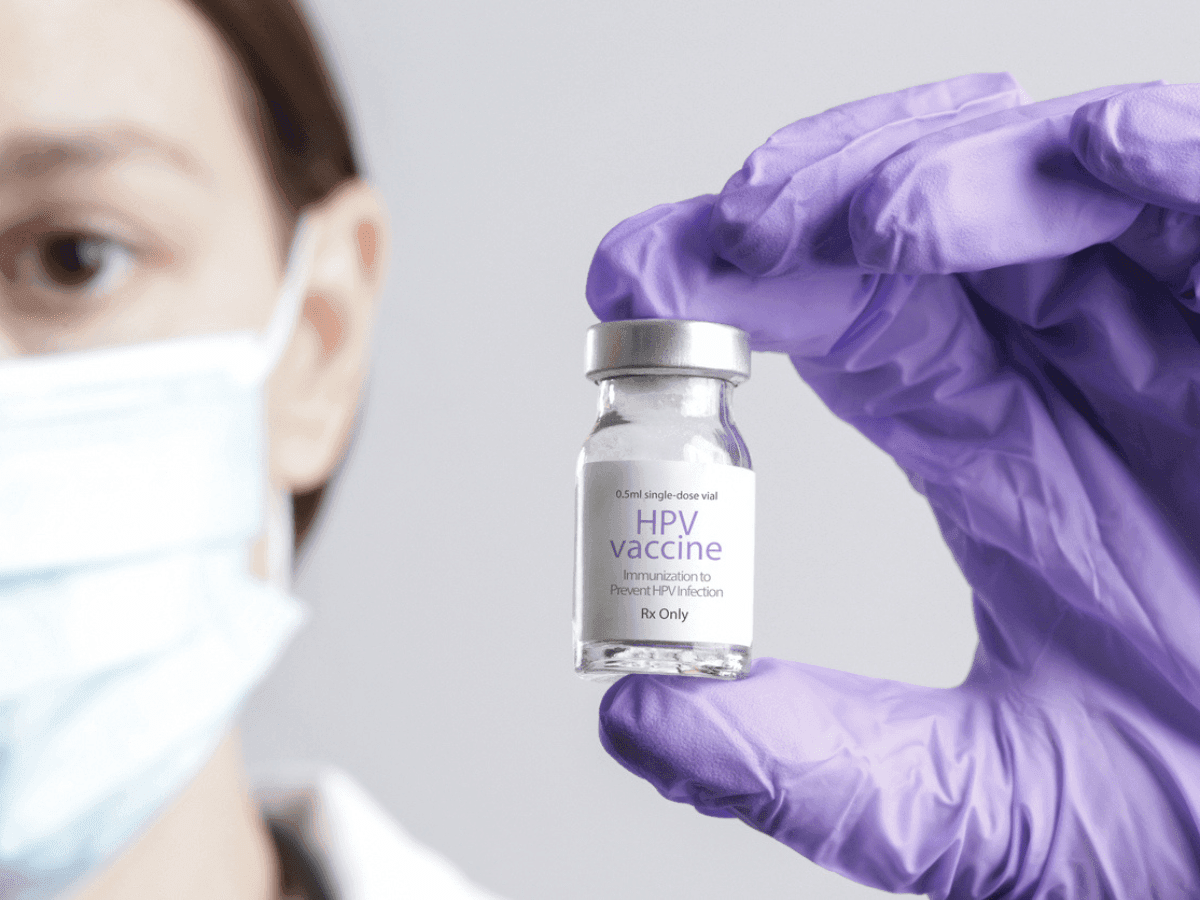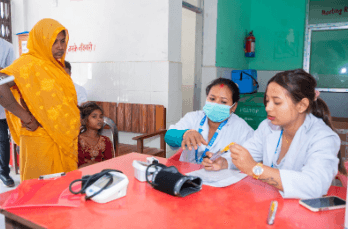The Hidden Connection: How HPV Awareness and Early Screening Can Prevent Cervical Cancer

Author
Binaytara Team
March 4 marks the International Human Papillomavirus (HPV) Awareness Day. Established in 2018 by the International Papillomavirus Society, this Day aims to continue raising awareness and understanding of HPV globally, particularly regarding the prevention of HPV-associated cancer. This year’s theme, “The World’s Most Viral Secret,” alludes to the obscurity surrounding knowledge about HPV despite its widespread prevalence. To reveal the secret, let’s peel back the layers of what this virus entails.
HPV, the most common sexually transmitted infection globally, is a virus that infects skin or mucosal cells. It spreads through direct skin-to-skin contact, causing warts and lesions, some of which can be precancerous. Although rare, HPV can also be transmitted vertically during the childbirth period.
In 1976, Harald zur Hausen, with a sense of mystery and cautious speculation, proposed a possible link between HPV and cervical cancer. Since then, more than 200 types of HPV have been identified. These strains are classified as either low-risk or high-risk, based on their potential to cause cancer. While most people infected with HPV show no symptoms, low-risk strains can lead to warts and focal respiratory papillomatosis. On the other hand, high-risk strains are associated with various cancers, including cervical, vaginal, vulvar, anal, penile, and oropharyngeal cancers.
How does HPV infection lead to cervical cancer? The infection triggers a higher production of proteins, called E6 and E7, which deactivate other key proteins responsible for regulating cell division. This is akin to removing a barrier that prevents a line of dominoes from falling. As a result, the usual control over cell growth is lost, causing cells in the cervix to multiply uncontrollably and eventually leading to the development of cancer.
Cervical cancer has been deemed one of the only cancers that can be eliminated worldwide. In 2022, about 660,000 new cases of cervical cancer were diagnosed globally, with 94% of the 350,000 deaths occurring in low-and middle-income countries. The World Health Organization states that untreated persistent HPV infection in the cervix is responsible for 95% of cervical cancer cases. This statistic highlights the need to educate the public about the importance of screening and vaccination.
The most common form of screening, often recommended by OB/GYNs to patients, is HPV co-testing during a cervical Papanicolaou test (widely known as the pap smear). This test can help detect the presence of HPV or precancerous lesions in the cervix. Based on the recommendations of the United States Preventative Services Task Force (USPSTF) and the American Society for Colposcopy and Cervical Pathology, women should get a pap smear every three years starting at age 21.
As of 2023, there are six HPV vaccines available globally to protect against high-risk HPV, which causes most cervical cancers. According to the Centers for Disease Control (CDC), the HPV vaccine is recommended for all adults through age 26, if not adequately vaccinated when younger. Many of the common misconceptions about the HPV vaccine, such as it is not safe or causes infertility, have been dispelled over the years. Yet, most of these myths persist in conversations surrounding the vaccine.
In our interview with Dr. Fengting Yan, a leading U.S. oncologist specializing in women's cancers, she emphasized the lack of widespread advocacy for HPV vaccination, stating, “ Unfortunately, even in this country and many others, HPV vaccination is not widely advocated. Studies show that the HPV vaccine can prevent more than 90% of cervical cancers….it is highly effective and safe.”
To further reduce the prevalence of HPV infection, men are also encouraged to get the vaccine. Dr. Fengting Yan shared a personal story about her 8-year-old son, who chose to get the HPV vaccine. He was proud to do his part in protecting future generations from cervical cancer. This anecdote highlights the need to advocate for HPV vaccination in both boys and girls, emphasizing that preventing this devastating disease is a responsibility that benefits everyone.
In January, we highlighted the importance of HPV Vaccination and Early Screening in observance of Cervical Cancer Awareness Month. As part of our ongoing effort to champion women’s access to cancer care, our Center for Women’s Cancer Care Access and Advocacy program works tirelessly to increase awareness about HPV vaccination in underserved communities. We focus on empowering women through education, increasing access to essential cancer screenings, and improving overall care delivery in rural areas. By leveraging partnerships with local and global stakeholders, the center plays a vital role in creating a world where no woman has to face cancer alone, regardless of location or socioeconomic status.

Health camp at Binaytara Hospital
One of the center's cornerstone initiatives is promoting and providing early cervical cancer screening, which is crucial for early detection and effective treatment. In rural Nepal, for example, our organization has helped set up accessible screening services, educated women about the importance of regular screenings, and ensured that services reached the most vulnerable populations.
It is also important for healthcare providers to keep informing and guiding patients through the cervical cancer prevention process. From counseling about the importance of HPV vaccination to recommending routine cervical screenings, providers can empower patients with the knowledge and resources they need to take preventative steps. Regular conversations about HPV and its connection to cervical cancer, as well as the safety and efficacy of available vaccines, can change the trajectory of women’s health.
Besides, the efforts of clinicians, researchers, and organizations, like ours, policymakers play a critical role in ensuring that cervical cancer prevention becomes a priority at national and global levels. By supporting initiatives such as HPV vaccination programs, early screening, and public health education campaigns, lawmakers can help reduce the prevalence of cervical cancer and improve outcomes for women worldwide.
Individuals, too, have an essential role to play in cancer prevention. If you are eligible, getting vaccinated against HPV can dramatically lower your risk of cervical cancer. Additionally, scheduling regular screenings and encouraging friends, family, and colleagues to do the same can create a ripple effect of awareness.
HPV is the leading cause of cervical cancer, but it does not have to be. Through vaccination, regular screenings, and public awareness, cervical cancer is a preventable disease. The more we talk about HPV, the more we empower individuals and communities to take action before cancer has the chance to develop.
It is time to uncover the viral secret. By raising awareness, advocating for change, and supporting efforts like those of Binaytara Foundation’s Center for Women’s Cancer Care Access and Advocacy, we can drastically reduce the global burden of cervical cancer. The moment for change is here. Together, we can help save lives and create a healthier future for women everywhere.
The content provided is for informational purposes only and is not intended as medical advice. Consult a medical professional for diagnoses, treatment, or medical advice.
Works Discussed
- Jensen, J. E., Becker, G. L., Jackson, J. B., & Rysavy, M. B. (2024). Human papillomavirus and associated cancers: a review. Viruses, 16(5), 680.
- Zur Hausen, H. (1977). Human papillomaviruses and their possible role in squamous cell carcinomas. Current topics in microbiology and immunology, 1-30.
- World Health Organization. (Year, Month Day). Title of the fact sheet. World Health Organization. https://www.who.int/news-room/fact-sheets/detail/cervical-cancer
- Reiter, P. L., McRee, A. L., Kadis, J. A., & Brewer, N. T. (2011). HPV vaccine and adolescent males. Vaccine, 29(34), 5595-5602.